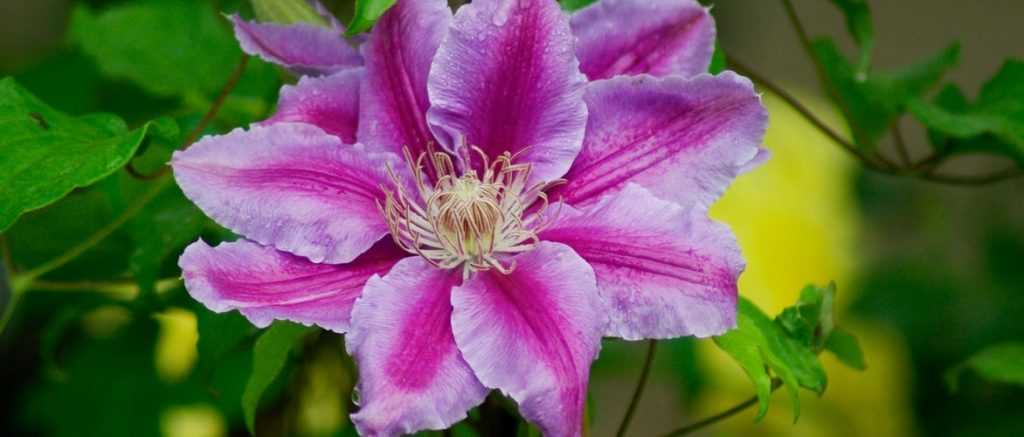
Clematis: Which variety to choose?
Our tips to help you make the right choice!
Contents
The clematis are splendid climbing plants that bring vibrant colour to pergolas and arbours. They bear, often in spring or summer, large colourful flowers. There is such an abundance of varieties that it can be quite difficult to choose. Especially since they often have different characteristics: they can produce single or double flowers, deciduous or evergreen foliage, offer continuous flowering throughout the summer or winter flowering, they can be climbing or not, and adapt more or less well to container growing… To choose your clematis wisely, you need to know what effect you wish to achieve. Do you want an extravagant flowering or rather a subtle and natural one? Do you want it to climb a pergola, decorate a terrace, or even grow as ground cover? Clematis offer countless possibilities… It would be a shame not to take advantage of them!
What is the intended effect?
- For flowers in the heart of winter!
To brighten up the winter gloom, choose Christmas clematis, Clematis cirrhosa. They offer an original flowering, often creamy white punctate with red spots. The flowers are bell-shaped with four petals. Depending on the variety, they can flower between October and March. The leaves are evergreen and glossy. Unfortunately, they are not very hardy and require winter protection! We recommend the variety Clematis cirrhosa ‘Freckles’. Also discover the clematis ‘Winter Beauty’, which lives up to its name! It will offer you small white bell-shaped flowers from December to February. However, it is delicate to grow! For a slightly later flowering, you can choose the Armand’s clematis, Clematis armandii, which flowers in late winter, from March onwards.
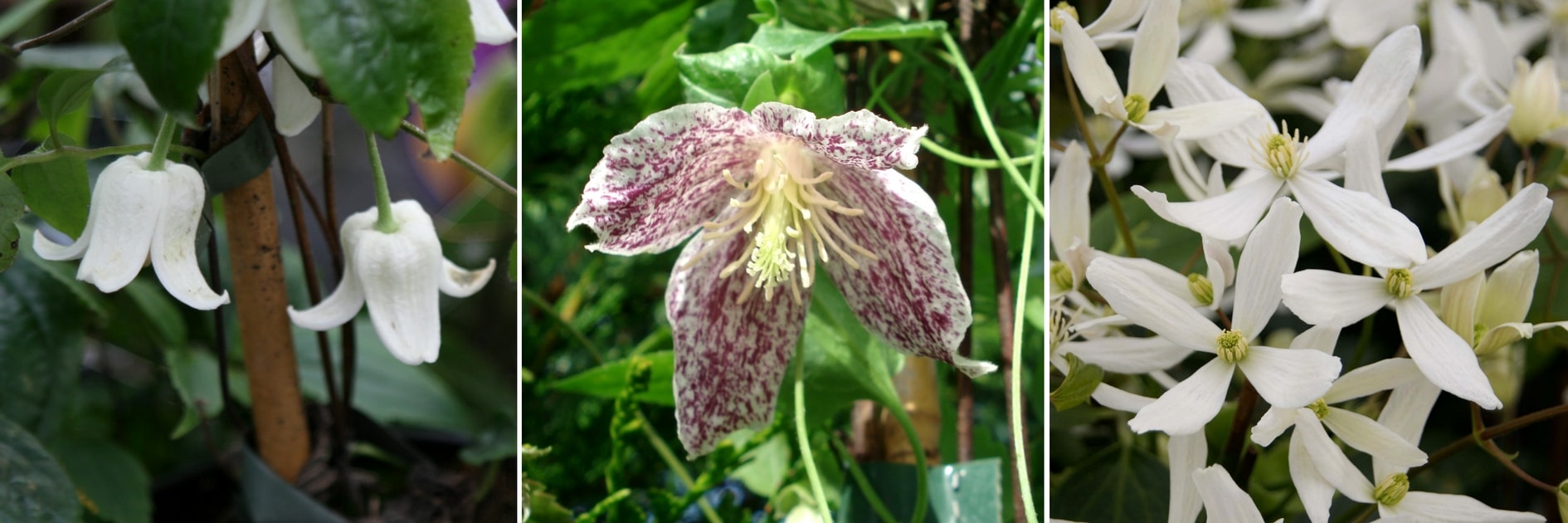
Clematis ‘Winter Beauty’, Clematis cirrhosa ‘Freckles’ and Clematis armandii ‘Snowdrift’
Also discover our advice sheet: 6 winter-flowering clematis.
- Flowers continuously all summer: long-flowering clematis!
Some clematis offer never-ending flowerings, take advantage of them! It is common for hybrids to have perpetual flowerings that follow one another. This is the case with Clematis ‘Westerplatte’, which offers throughout the summer and in successive waves a fragrant flowering of intense red. As for the clematis ‘Baby Star’ and ‘Piilu’, they offer in spring a double or semi-double flowering, then a second, single flowering in late summer! The first bears elegant white flowers, while the second will bring a little more colour, with its pink flowers and yellow stamens. Similarly, we appreciate the jackmanii clematis and ‘Princess Diana’ for their generous flowering that lasts all summer!
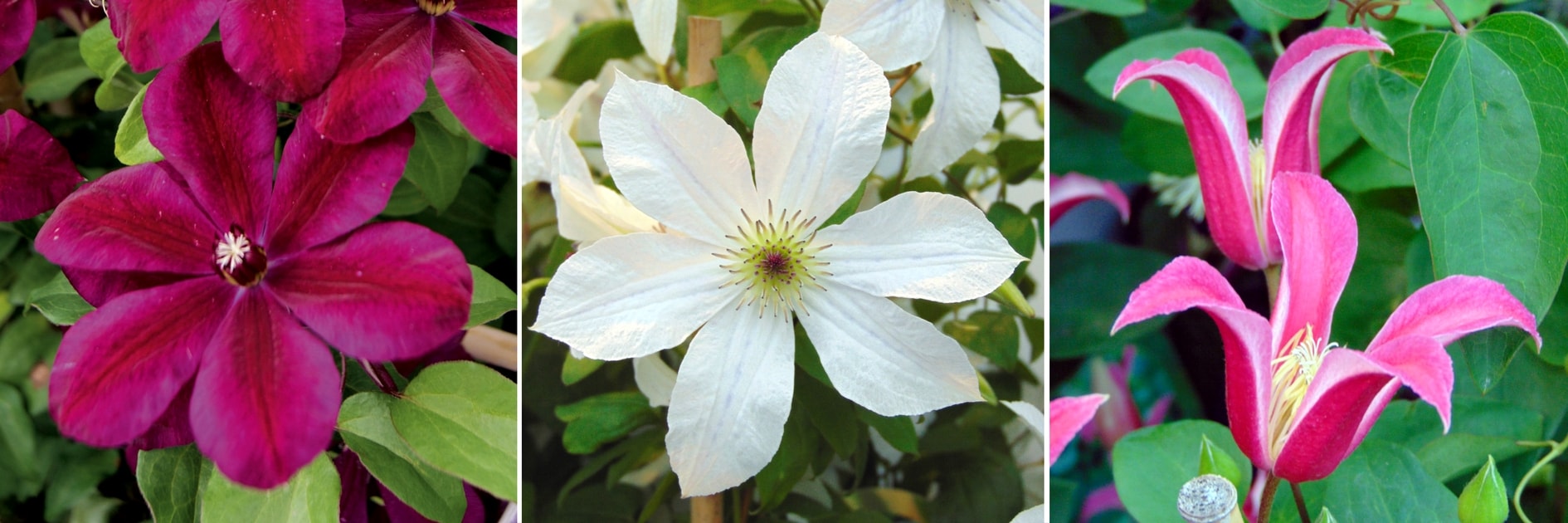
Clematis ‘Westerplatte’, Clematis jackmanii ‘Forever Friends’ and Clematis texensis ‘Princess Diana’
- For an original flowering!
Rediscover clematis! Opt for originality with the creamy white flowers maculate with purple of Clematis cirrhosa ‘Freckles’, spotted flowers being rather rare among clematis! Be surprised by the aptly named variety ‘Octopus’, whose long violet sepals spread out in all directions like the tentacles of an octopus. It also exists in a blue variant, ‘Spiky’. Fall for Clematis pitcheri and its small blue and white bell-shaped flowers, with a bloated, very rounded appearance! As for the clematis ‘Taiga’, it is a truly impressive variety with its large violet and creamy white flowers. The bicoloured sepals in the centre open gradually, allowing the flower to change its appearance as it blooms. A variety so refined that it becomes almost hypnotic! Also discover the creamy white and light green flowers of Clematis ‘Sen no Kaze’. The green colour is usually very rare for flowers! As for the Clematis tangutica ‘Golden Harvest’, it bears small yellow bell-shaped flowers, quite different from the usual clematis. Finally, discover the ruffled flowers of the clematis ‘Rosalyn’, with its red and fine sepals, giving it a very dishevelled appearance!
→ Also check out our article on 7 clematis with original flowering
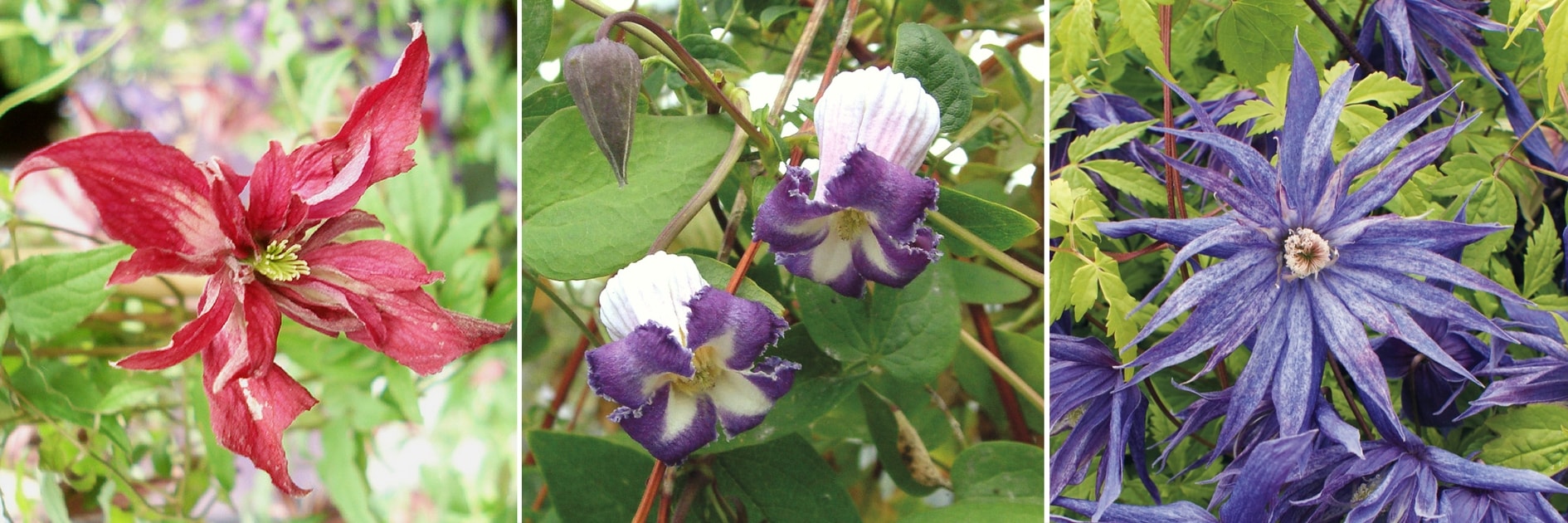
Clematis ‘Rosalyn’, Clematis pitcheri and Clematis ‘Spiky’
- For a very natural and simple look
Opt for varieties with small flowers, single or bell-shaped. Avoid the exuberance of large double flowers and the Patens group clematis. Fall for the delicate bells of Clematis fusca. The variety ‘Winter Beauty’ bears beautiful white bell-shaped flowers in the heart of winter, particularly elegant. Turn to botanical species, such as the hedge clematis, Clematis vitalba, which is found spontaneously in France. Also discover Clematis integrifolia, a small herbaceous clematis that offers delicate blue bell-shaped flowers. Small-flowered clematis have an undeniable charm! They bring an undeniable wild and natural touch to the garden.
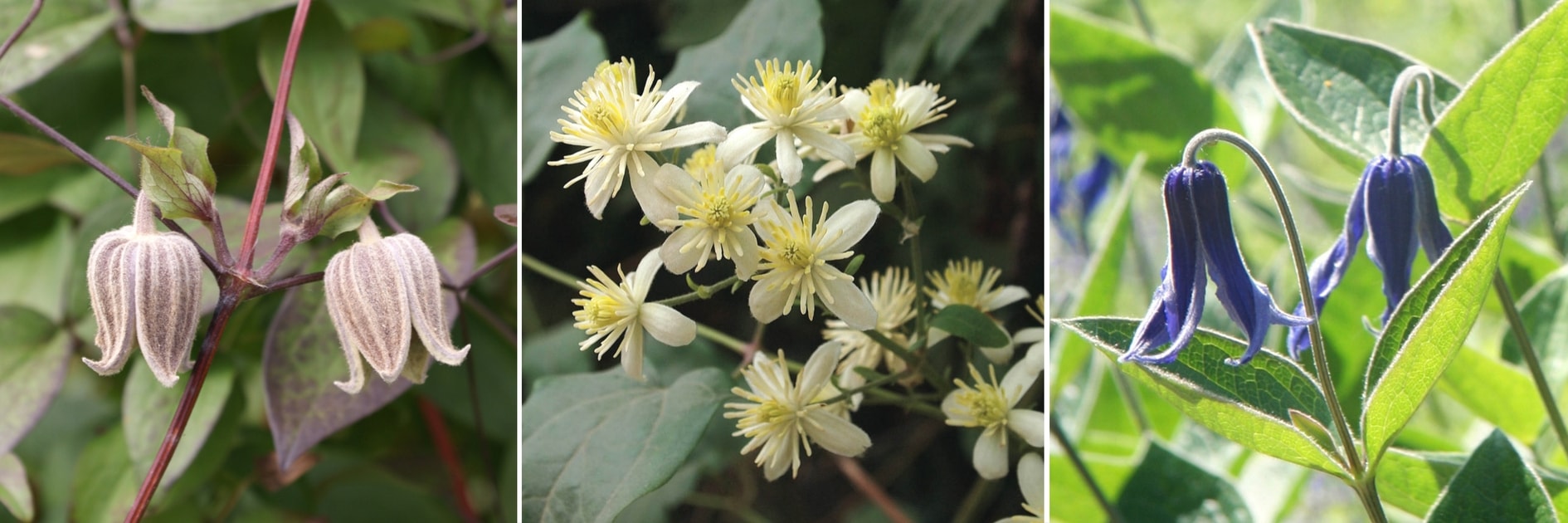
Clematis fusca, Clematis vitalba and Clematis integrifolia (photo Michael Wolf)
- For a sophisticated flowering!
Turn to large-flowered hybrids and double-flowered varieties. The most spectacular flowering is undoubtedly that of Clematis ‘Taiga’. It offers bicoloured flowers, violet and creamy white, with a very refined and sophisticated appearance. It is really different from other clematis! Just as exuberant, the variety ‘Multi Blue’ bears large double flowers, blue-violet, lighter in the centre. As for Clematis viticella ‘Purpurea Plena Elegans’, it offers a double, pink flowering.
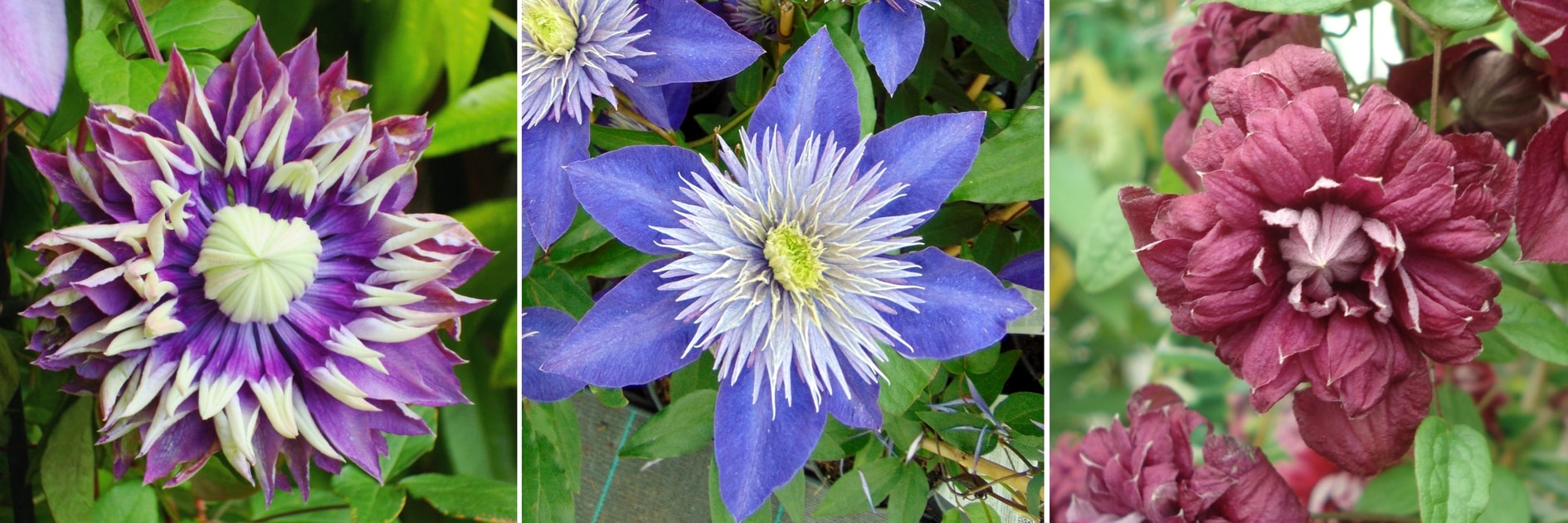
Clematis ‘Taiga’, Clematis ‘Multiblue’ and Clematis ‘Purpurea Plena Elegans’
- Evergreen clematis!
Discover the wax clematis, Clematis cirrhosa. It bears original flowers in the heart of winter! It surprises us with its creamy white flowers spotted with red or purple. You can also choose Clematis armandii, the Armand’s clematis. It flowers a little later, offering a white and fragrant flowering in spring.
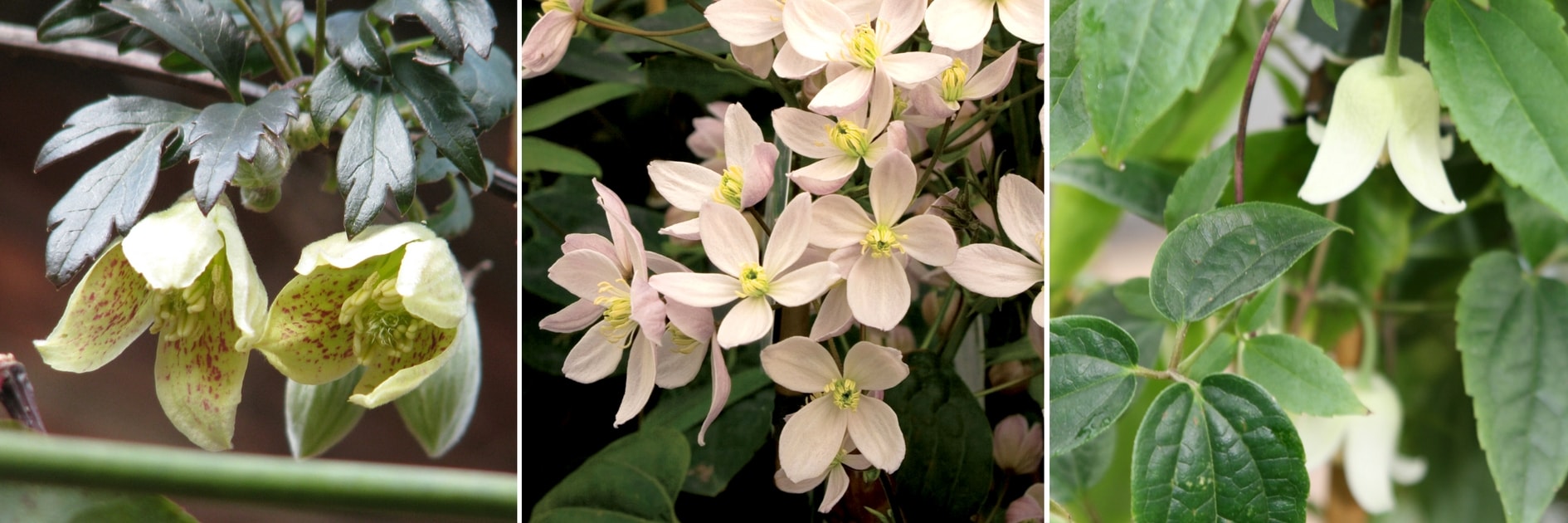
Clematis cirrhosa var. balearica (photo Peganum), Clematis armandii ‘Apple Blossom’ and Clematis ‘Winter Beauty’
Read also
Clematis: Planting, Pruning and CareFor which location and purpose?
- For container growing
Some clematis adapt perfectly to container growing, allowing you to brighten up a terrace or balcony. Choose varieties with a compact habit that grow slowly. Clematis ‘Baby Star’ is particularly well-suited: it doesn’t exceed 1.5 metres in height and offers abundant flowering in spring and late summer with pure white flowers. If you prefer a more colourful variety, opt for Clematis ‘Piilu’: it’s covered in a multitude of flowers with pink sepals and yellow stamens. Also discover clematis ‘Astra Nova’, Clematis ‘Westerplatte’ or ‘Early Sensation’. For something more original, you could choose the herbaceous clematis Clematis integrifolia ‘Twinckle’. Clematis alpina varieties are suitable as they grow slowly. On the other hand, avoid Clematis terniflora, a vigorous grower. We recommend pairing them with other small bushes or perennials, which will help maintain fresh, well-drained soil.
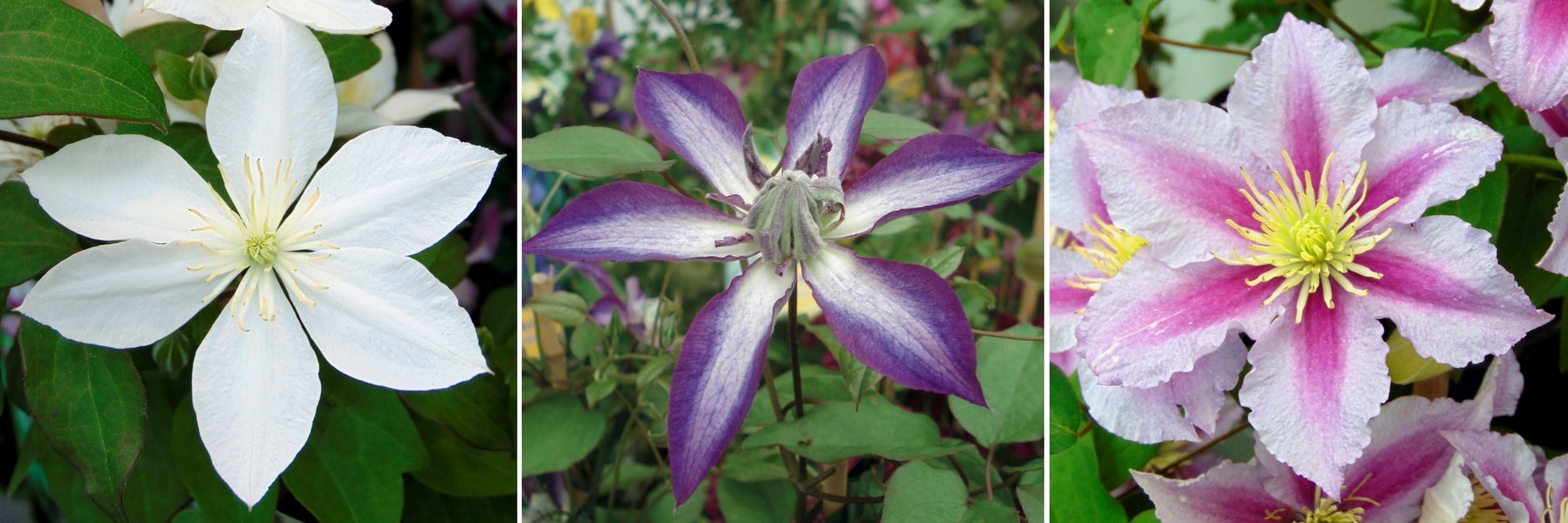
Clematis ‘Baby Star’, Clematis ‘Astra Nova’ and Clematis ‘Piilu’
- A non-climbing clematis for flower beds!
Herbaceous clematis integrate very easily into flower beds. Discover Clematis heracleifolia, a highly original clematis that produces small mauve-blue bell-shaped flowers in autumn and bears large leaves: it does the complete opposite of typical varieties! Be charmed by the beautiful bell-shaped flowers, white and pale blue, of the lovely Clematis integrifolia ‘Twinckle’. It’s perfectly suited to container growing or flower beds. You could also choose Clematis recta ‘Purpurea’: it bears numerous small white flowers, beautifully highlighted by its purple leaves and stems.
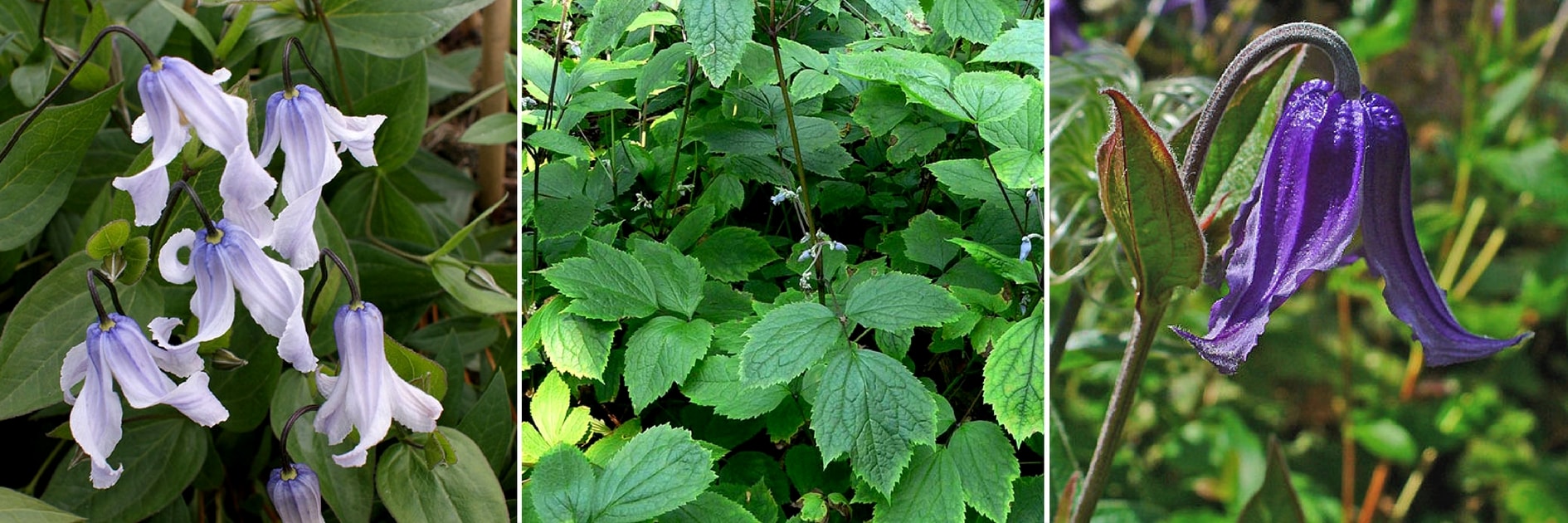
Clematis ‘Twinkle’, Clematis heracleifolia, Clematis integrifolia (photo H. Zell)
- A ground-covering clematis!
Yes, clematis aren’t always climbing—they can also creep and cover the ground with a multitude of flowers! The clematis ‘Robert Brydon’ will provide a striking tapetum of white and pale mauve flowers. Also discover the beautiful star-shaped white flowers, delicately scented, of Clematis mandshurica.
Discover other Clematis
View all →Available in 1 sizes
Available in 1 sizes
Available in 1 sizes
Available in 1 sizes
Available in 1 sizes
Available in 1 sizes
Available in 1 sizes
Available in 1 sizes
Available in 1 sizes
Available in 1 sizes
- Subscribe!
- Contents


































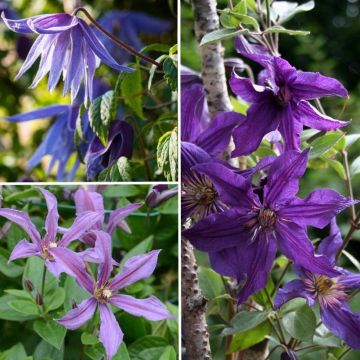
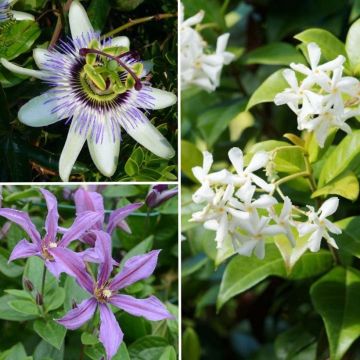
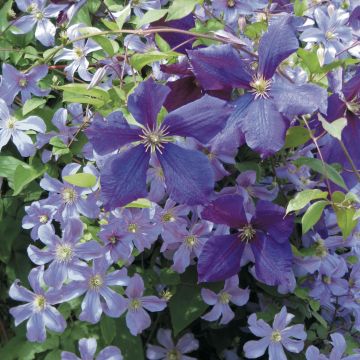
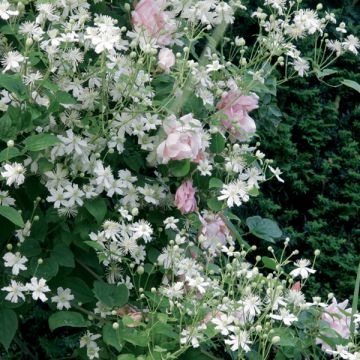
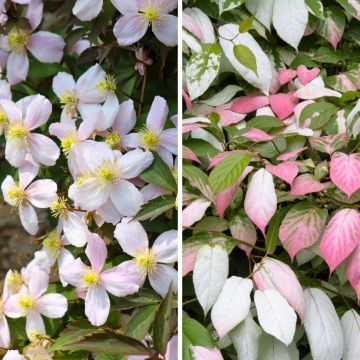
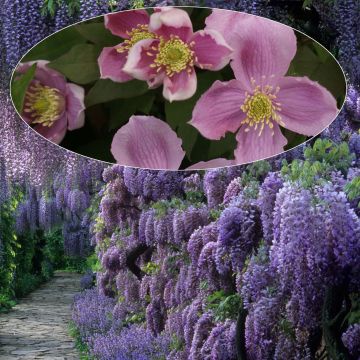
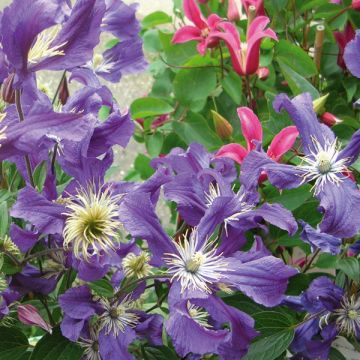
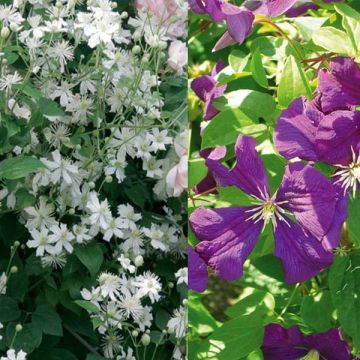
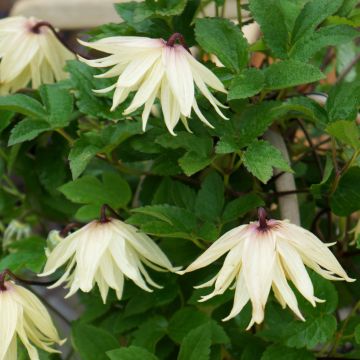
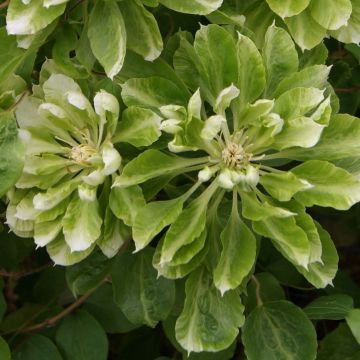
Comments